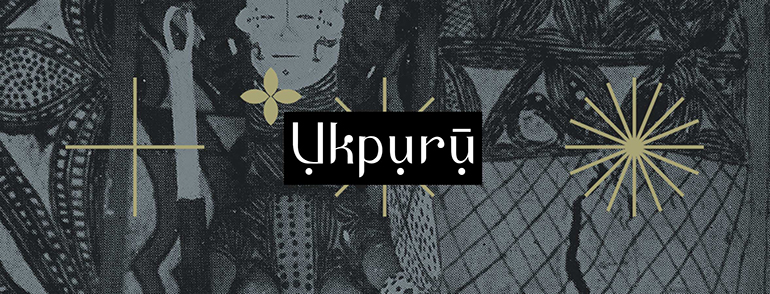Rumuji Owu play, the character is Abam (one who has visited placeds and learnt things) and the figure represents a fierce fish spirit. The headpiece is a long horizontal carved piece with a pointed head depiciting sharp incised teeth, round eyes, and fins on the sides and top. The headpiece is painted in different colours. On top of the carving is a square cloth panel (like a sail) that has four pieces of cloth sewn in the centre. The masquerader is draped in block printed cotton cloth. In the background are spectators.— G.I. Jones
Location: Rumuji, Alaigbo? | Date: 1930s | Credit: Jones
